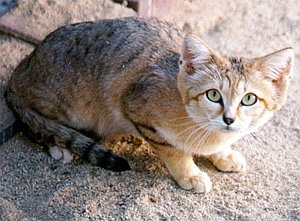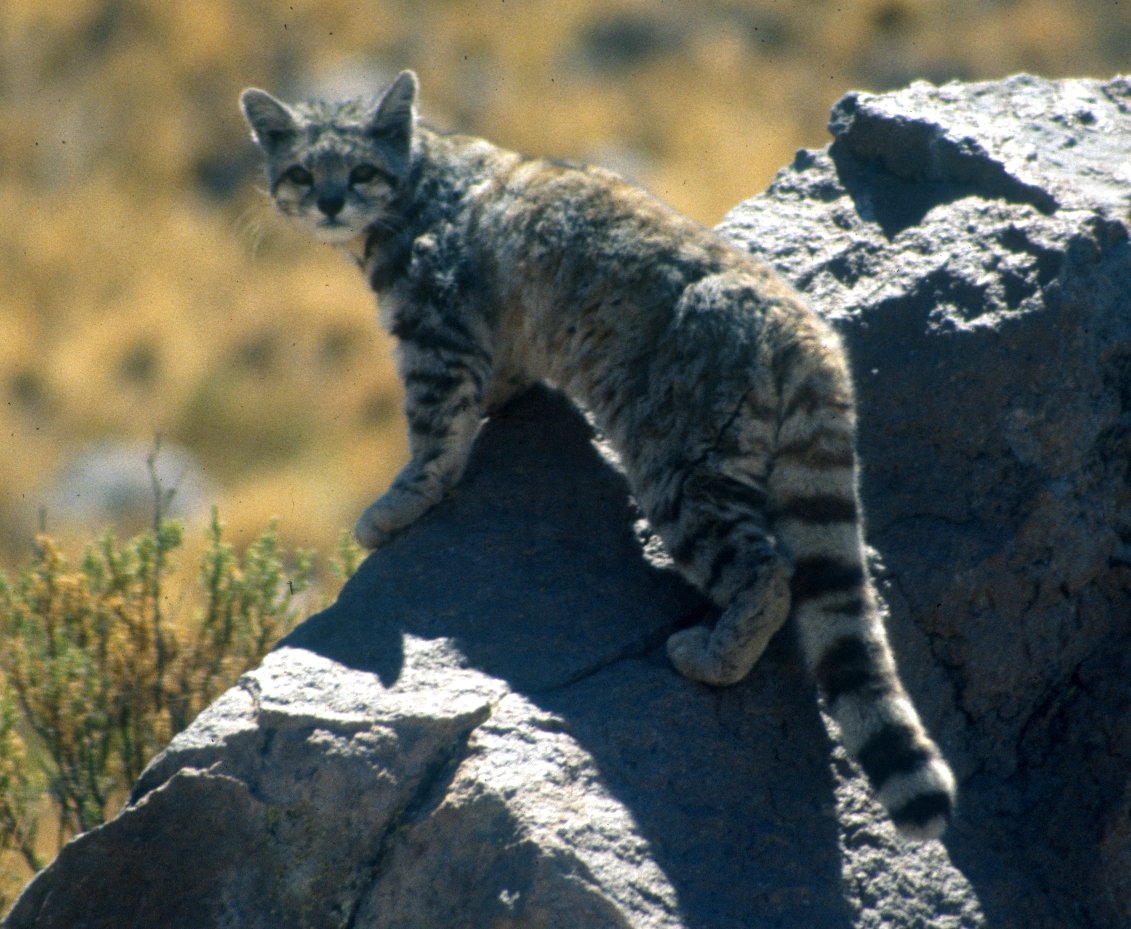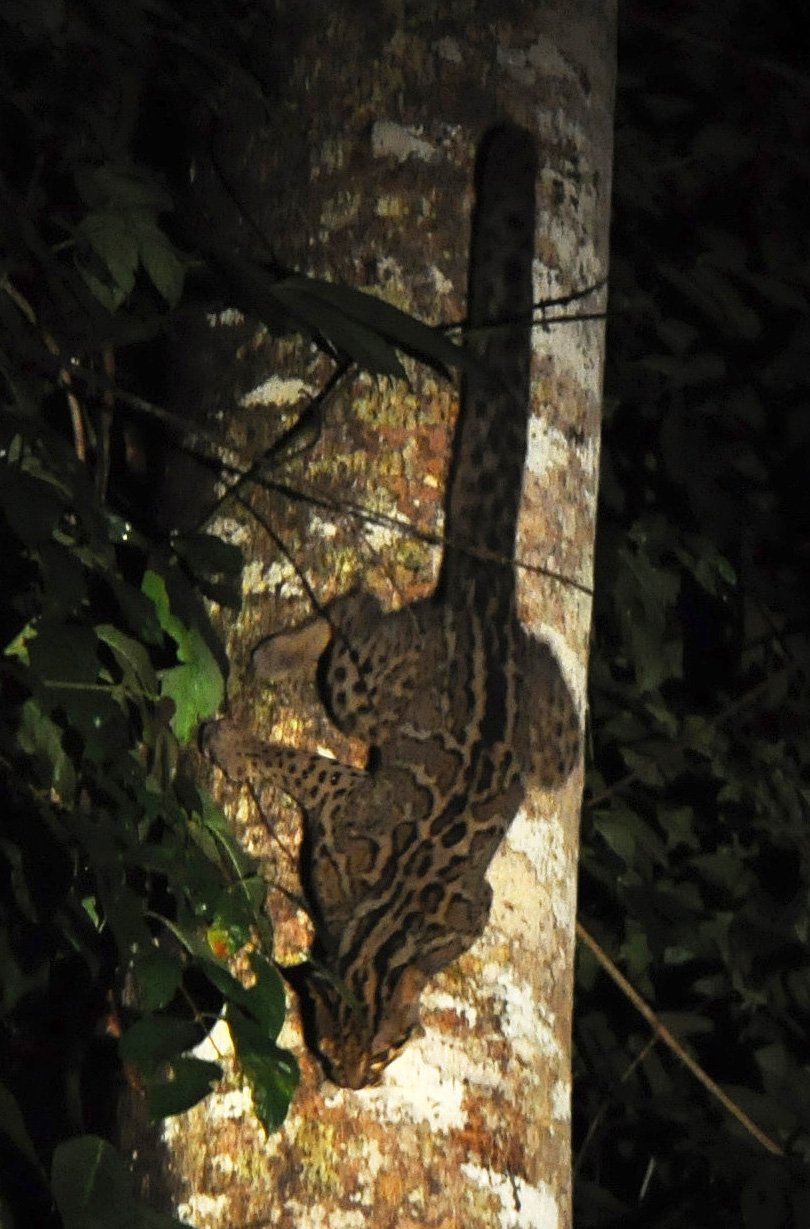Ever wondered what prowls through the bones of deserted cities, ghost towns, or forgotten temples? While most of us imagine silence and dust, some wild cats have made these abandoned places their secret playgrounds. Get ready to meet seven extraordinary felines who don’t just survive where humans have vanished—they thrive! Let’s explore their world through 25 vivid snapshots.
Ghost Town Bobcats: Masters of the Empty Streets

Bobcats are quick to claim abandoned towns, weaving through crumbling buildings like silent shadows. These adaptable cats feast on rodents and birds that flock to neglected places, making empty homes their hunting grounds. Think of them as furry phantoms, blending in so well you might never know they’re there!
Pallas’s Cats: Fuzzy Survivors of Ruined Fortresses

With their flat faces and thick, shaggy coats, Pallas’s cats haunt the stone ruins of Central Asia. The silence of deserted fortresses suits them perfectly, giving these elusive hunters plenty of space to stalk unsuspecting prey. Their round bodies make them look like living plush toys, but don’t be fooled—they’re fierce survivors.
Lynx Patrol: Snowy Echoes in Abandoned Ski Resorts

Lynx thrive in deserted mountain resorts, their tufted ears and fluffy paws ideal for sneaking through snow-laden silence. When humans leave, these majestic cats reclaim the slopes, hunting rabbits and grouse. Their mysterious, golden eyes seem to watch every drifting snowflake—and maybe you, too.
Leopard Ghosts: Kings of Overgrown Estates

Leopards are the ultimate urban explorers, slipping through overgrown gardens and decaying mansions. With their stealth and strength, they turn forgotten estates into private kingdoms. Their spotted coats melt into the dappled shadows, like living art in nature’s gallery.
Caracals on the Runway: Claiming Abandoned Airports

Caracals, with their dramatic ear tufts, have discovered a love for wide-open spaces—especially old airfields no humans use anymore. These athletic cats leap across cracked runways, chasing birds and rodents, turning forgotten tarmacs into their personal playgrounds.
Jungle Cats: Rulers of Sunken Temples

In parts of Asia, abandoned temples become magical jungles, and jungle cats rule the ruins. Their sandy coats and sharp senses help them slip between mossy stones and tangled vines, where ancient echoes mix with the sound of pouncing paws. It’s like a real-life adventure movie—only wilder.
Servals in Forgotten Farms: Tall Grass, Tall Ears

Servals love the tall grass that takes over deserted farms. Their long legs and radar-like ears help them catch mice hiding in the weeds. Imagine a silent, striped hunter weaving through golden fields, utterly at home in the wild patches humans left behind.
Urban Leopards: Camouflage in Concrete Jungles

Some leopards have turned abandoned city blocks into secret lairs. Their spots blend perfectly with graffiti and rubble, allowing them to move unseen. These city slickers hunt stray dogs, pigs, or rats, proving that wildness can live right beneath our noses.
Pampas Cats: Shadows in Deserted Mines

In South America, Pampas cats haunt the dark tunnels of old mines. Their fluffy tails and muted stripes blend with dusty shadows. These little-known cats love to explore, turning dangerous ruins into cozy dens and chasing bats for dinner.
Fishing Cats: Stalking in Flooded Factories

When factories flood and people flee, fishing cats move in. They paddle through shallow water, hunting fish and frogs, their webbed feet making them surprisingly agile. Imagine a cat that swims as well as it climbs—nature’s little amphibious acrobat.
Jaguars: Silent Watchers in Lost Rainforest Settlements

Where rainforest villages vanish, jaguars prowl again. Their powerful bodies glide through mist and moss, reclaiming the heart of the wild. These big cats rarely show themselves, but you’ll see claw marks on trees—a secret signature that says, “I’m home.”
Sand Cats: Tiny Terrors in Abandoned Outposts

Sand cats are pint-sized predators, perfectly suited for desert outposts where humans once camped. With ears bigger than their faces, they track insects and lizards by sound alone. Don’t let their cuteness fool you—they’re fierce and feisty, even in the harshest places.
Rusty-Spotted Cats: Hiding in Overgrown Gardens

The world’s tiniest wild cat, the rusty-spotted cat, thrives in the dense, tangled undergrowth of forests and even abandoned gardens. Weighing less than a housecat, it slips through vines and crevices with ease, stalking birds, insects, and small prey with lightning-fast, kitten-like agility. Despite its size, this miniature predator is a master of stealth and survival.
Ocelots: Ghosts of Forgotten Sugar Plantations

Ocelots roam the shadows of long-abandoned plantations, weaving through sugarcane that’s grown wild. Their beautiful, swirling coats shimmer in dappled sunlight as they hunt for armadillos and small mammals. These felines are the secret artists of the wild.
Margays: Tree Acrobats in Deserted Eco-Lodges

Margays, with their huge eyes and flexible ankles, reclaim empty eco-lodges. They leap from rafter to rafter, hunting birds that nest in unused cabins. Watching a margay climb feels like seeing a circus performer—only with fur and claws.
Jungle Leopards: Stalking Forgotten Battlefields

Old tropical battlefields, once scarred by war, have been overtaken by dense vegetation—and jungle leopards are among the first to return. Silent and shadowy, they prowl through tangled brush, reclaiming a space where human chaos once reigned. In these quiet, overgrown ruins, leopards remind us how nature heals and endures, one silent step at a time.
Wildcats of Chernobyl: Life After Disaster

In the infamous Chernobyl Exclusion Zone, wildcats have flourished where humans no longer tread. They slink through radioactive forests and ruined buildings, hunting in a landscape frozen in time. It’s a powerful reminder: nature bounces back, even after catastrophe.
Clouded Leopards: Misty Moves in Abandoned Tea Plantations

Clouded leopards slip like ghosts through the mist of abandoned tea estates, their swirling coats mirroring the fog that cloaks the hills. These elusive felines move with quiet purpose, transforming overgrown plantations into hidden realms. In their silent wanderings, they breathe wildness back into once-tamed land—stealthy monarchs of a world reclaimed.
Flat-headed Cats: Ghosts in Flooded Villages

Flat-headed cats are among the most elusive of wild felines, quietly navigating the watery ruins of forgotten villages. Their low, elongated heads and sharp teeth are perfectly adapted for catching fish in the dark. Mostly active at night, they slip through reed beds and flooded paths like shadows—silent predators in the world’s most secret wetlands.
Andean Cats: Wind Shadows in Empty Mountain Mines

Andean cats haunt the silent heights of abandoned mountain mines, where the air is thin and the winds never rest. With their thick, grey-spotted coats and bushy ringed tails, they vanish into stone and snow, leaving only pawprints behind. Rarely seen and scarcely studied, they move like whispers through the Andes—guardians of forgotten places and living echoes of ancient peaks.
Jungle Lynx: Watchers in Forgotten Plantations

Jungle lynx, with their sharp tufts and silent grace, stalk the overgrown ruins of old plantations like ghosts of the forest reclaiming lost ground. Their piercing eyes scan every shadow, every rustle among wild banana trees and tangled underbrush. These elusive predators thrive where nature tangles with memory—masters of survival in places once shaped by human hands, now ruled by instinct and silence.
Black-Footed Cats: Tiny Hunters in Deserted Camps

The black-footed cat may be tiny, but it’s a relentless hunter with a fearless heart. Africa’s smallest wild feline slips into the cracks of abandoned camps and crumbling huts, turning forgotten shelters into nighttime hunting bases. With unmatched determination, it can take down dozens of prey in a single night—proof that size means nothing when survival is on the line.
Asiatic Wildcats: Prowling Deserted Villages

Asiatic wildcats are silent explorers of the abandoned world. In ghost villages long forgotten by people, they pad through broken doorways and slip through cracked windows, vanishing into silence with every step. Their striped coats melt into shadowed corners, and their curious nature turns each crumbling room into a new mystery waiting to be unraveled.
Jungle Bobcats: Echoes in Overgrown Amusement Parks

Imagine the creak of an old carousel, now silent and overgrown—until a bobcat dashes through. Jungle bobcats thrive in these eerie playgrounds, weaving through rusted rails and leaping over toppled horses. What was once a place of laughter becomes their personal hunting ground, where nature takes back the fun and turns every broken ride into an adventure.
Marbled Cats: Secret Paths in Abandoned Gardens

Marbled cats, with fur like forest shadows, turn overgrown gardens into secret sanctuaries. Their lithe bodies glide along branches above old walking paths, where laughter once echoed. Silent and unseen, they hunt or lounge overhead—turning vines, rooftops, and forgotten trellises into elevated trails. In their world, the past is quiet, but the canopy is alive.

Suhail Ahmed is a passionate digital professional and nature enthusiast with over 8 years of experience in content strategy, SEO, web development, and digital operations. Alongside his freelance journey, Suhail actively contributes to nature and wildlife platforms like Feline Fam, where he channels his curiosity for the Feline into engaging, educational storytelling.
With a strong background in managing digital ecosystems — from ecommerce stores and WordPress websites to social media and automation — Suhail merges technical precision with creative insight. His content reflects a rare balance: SEO-friendly yet deeply human, data-informed yet emotionally resonant.
Driven by a love for discovery and storytelling, Suhail believes in using digital platforms to amplify causes that matter — especially those protecting Earth’s biodiversity and inspiring sustainable living. Whether he’s managing online projects or crafting wildlife content, his goal remains the same: to inform, inspire, and leave a positive digital footprint.






